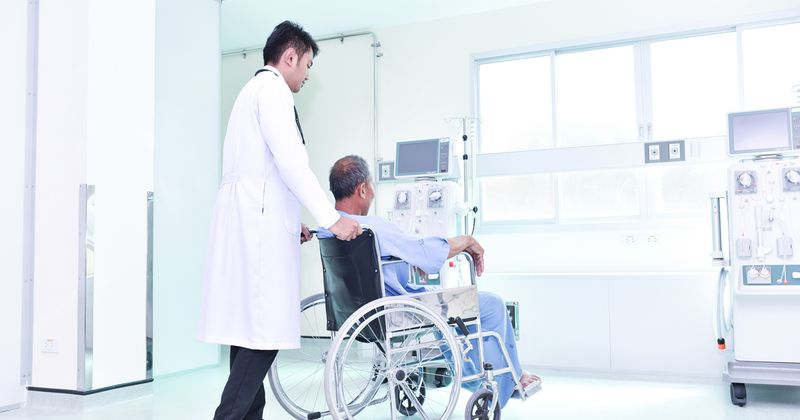Patients on dialysis have similar SARS-CoV-2 seropositivity rates as their communities
Patients who received in-center hemodialysis at facilities in New York City had similar seropositivity rates for SARS-CoV-2 infection as did residents of the same neighborhoods, study results showed.
This led researchers to suggest that infections in the patients’ area of residence, rather than contact with other patients or dialysis staff, may be the “primary driver” of COVID-19 for this patient population.

“There are concerns that in-center maintenance hemodialysis (HD) patients may have a higher risk for infection with SARS-CoV-2, because they take three or more round-trips a week to dialysis centers and spend several hours during dialysis close to fellow patients and clinic staff,” Ohnmar Thwin, MD, of the Renal Research Institute in New York, and colleagues wrote. “ ... During the first wave of COVID-19, New York City was one of the worst affected regions in the U.S. Starting in August 2020, the New York City Department of Health (NYC DOH) has published regularly updated seropositivity rates for the general population for most [five]-digit ZIP code areas. This allowed us to link ZIP code area seroprevalence data with the results of [two] cross-sectional serosurveillance projects conducted in in-center maintenance HD patients and clinic staff in Manhattan dialysis facilities.”
For the study, researchers assessed the prevalence of SARS-CoV-2 antibodies in patients on dialysis, staff and neighborhood residents, calculating ZIP code seropositivity rates by dividing the number of seropositive in-center patients by the number of all residents in the neighborhood.
A total of 429 patients resided in 87 ZIP code areas, while a total of 115 staff members resided in 88 ZIP code areas. Researchers noted that only two areas comprised four or more staff members; an analysis comparing seropositivity rates for staff vs. the general population was not possible due to lack of general population estimates in these neighborhoods.
For the dialysis population, researchers found 30.3% had antibodies against SARS-CoV-2. Of these individuals, 69.2% tested positive for IgG antibodies only, 30% tested positive for both IgG and IgM antibodies and 0.8% tested positive for IgM antibodies only.
Investigators found a significant association between seropositivity rates by ZIP codes for patients on dialysis and the general population.
Members of the dialysis staff had a lower seropositivity rate than patients, with 16.5% of staff having antibodies against SARS-CoV-2 (89.5% showed antibodies for IgG only and 10.5% showed antibodies for IgM only; none tested positive for both types of antibodies).
“Our results indicate a significant correlation between general population and in-center hemodialysis patient seropositivity rates for SARS-CoV-2 infection and support the notion that COVID-19 in in-center maintenance HD patients is primarily driven by infections in the patients’ residence area,” the researchers concluded. “The lower seropositivity rates in dialysis staff compared to patients points toward the effectiveness of screening measures and efforts to limit transmission in dialysis centers.”
Future research should focus on how socioeconomic factors impact COVID-19 seropositivity rates across different regions, Thwin and colleagues recommended.










